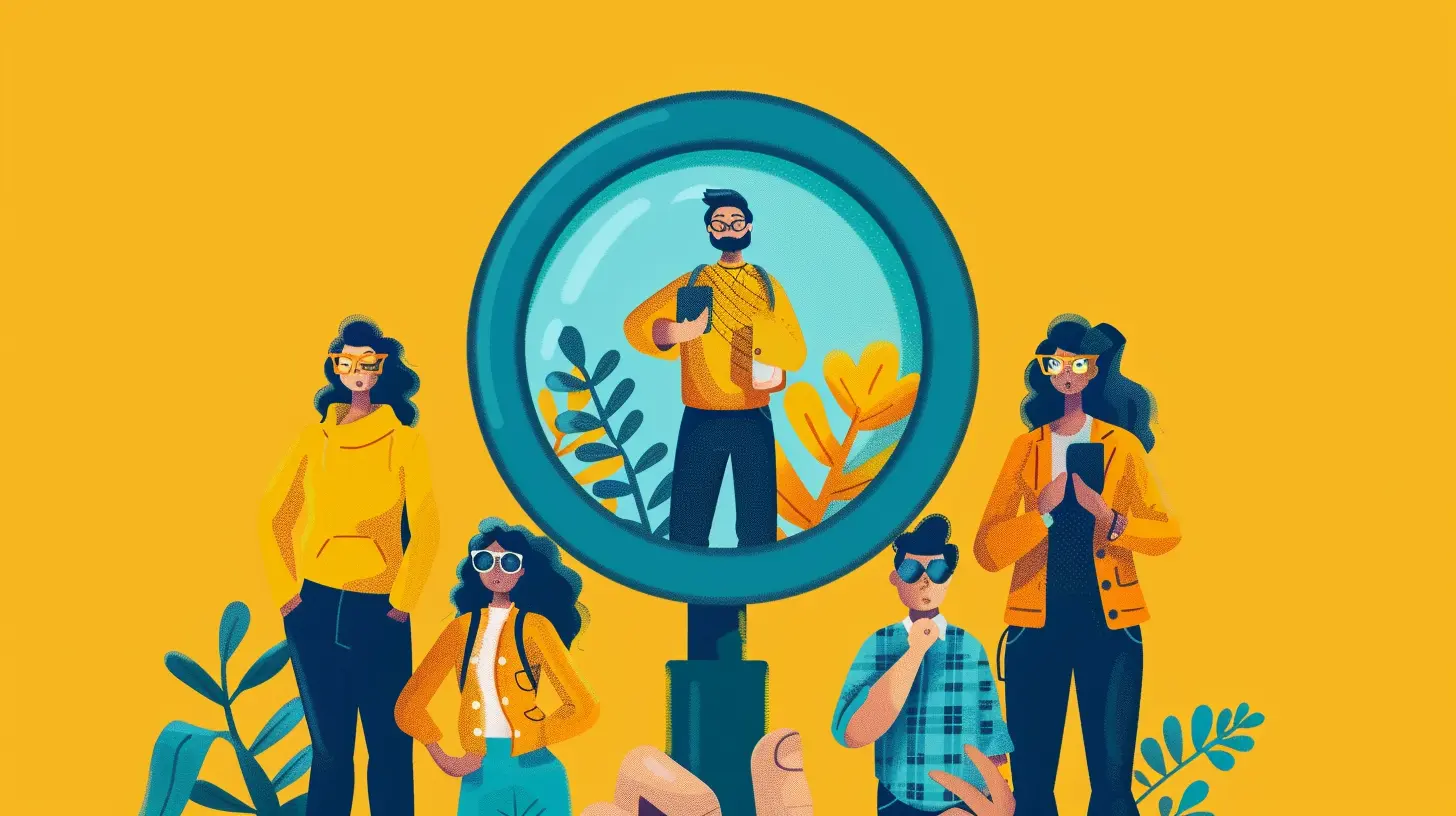Expanding Your Professional Skills Through Peer Observations
23 October 2025
Let’s be honest — professional growth doesn’t always come from certificate programs, weekend workshops, or expensive conferences. Sometimes, the most powerful learning can happen right in your own workplace. Yep, just by watching your peers do what they do best.
Sounds simple, right? That’s because it is. But don’t underestimate its power. Peer observations can be a total game-changer when it comes to boosting your skills, confidence, and overall career development.
So, grab a coffee, get comfy, and let’s dive into how observing your colleagues can take your professional journey to the next level.
What Are Peer Observations, Anyway?
Think of peer observations like a behind-the-scenes pass to how your colleagues get stuff done. It's when you observe a coworker in action — whether it’s teaching a class, leading a meeting, handling clients, or working on a project — and then reflect on what you saw.Here’s the key: it’s not about judging or critiquing. It’s about learning. You get to see different approaches, strategies, and styles, and then use that knowledge to enhance your own game.
It’s professional development, without the jargon or pressure.
Why Peer Observations Beat a PowerPoint Presentation Any Day
Ever sat through a training where the only thing you learned was how to keep your eyes open while nodding politely? We’ve all been there.Peer observation is the complete opposite. It’s active, engaging, and totally hands-on. You’re in the real world, seeing real people doing real work. And that kind of learning sticks.
Benefits of Peer Observations:
- Fresh Perspective: You get to see how others tackle the same challenges you face every day — but maybe with a fresh twist.- Inspiration on Tap: Spot a technique or strategy that really clicks? You can try it out in your own work.
- Builds a Learning Culture: When people are open to sharing and learning from each other, the whole team gets stronger.
- Immediate Application: You don’t have to wait to use what you saw — you can start the next day.
- Breaks Professional Silos: It opens doors to collaboration and mutual respect.

Making Peer Observation Work: A Step-by-Step Guide
You might be wondering, “Okay, this sounds cool… but how do I actually start doing this?” Good question, and good news — it’s easier than you think.Here’s a simple plan to make peer observations part of your professional routine.
1. Set Clear Intentions
Start by figuring out what you want to learn. Are you trying to improve your communication skills? Want to pick up some tech tricks? Hoping to handle tough conversations better?Knowing your "why" sets the tone for everything that follows.
2. Choose the Right Peer
Look for someone who’s strong in the area you want to grow in. Maybe it’s someone from a different department, or maybe it’s the colleague who seems to handle chaos like a pro.It’s not about choosing “the best” person — it’s about picking someone you can learn from.
3. Ask (Politely and Clearly)
Reach out and ask if you can observe them for a bit. Be clear that you're doing it to learn, not to evaluate. Most people will be flattered — who doesn’t like being seen as someone worth learning from?4. Observe with Purpose
When you're watching, take notes — but not just about what they do. Pay attention to how they do it.What’s their tone? How do they manage stress? How do they interact with others? These small details often carry the biggest lessons.
5. Reflect and Apply
After the observation, take a few minutes to reflect.- What did they do that you admired?
- How is their style different from yours?
- What would you like to try out for yourself?
Then, make a plan to actually apply those insights. Learning without action is like having a gym membership and never using it — pointless.
6. Share and Repeat
If you learned something useful, share it with others! And don’t stop at one observation. Make it part of your ongoing development.
Real Talk: What You Might Learn from Watching Others
Still not sure this can really expand your skills? Let’s break it down with some examples.Communication Skills
Watching a colleague lead a meeting or deliver a presentation can reveal all kinds of tricks — from body language to the way they structure their message. Maybe they use humor, maybe they pause at just the right spot, or maybe they ask killer questions that spark discussion. All things you can copy (and remix in your own style).Time Management and Workflow
Some people are organizational ninjas. Observing how they prioritize tasks, manage interruptions, or use tools like Trello or Notion can save you hours each week.Conflict Resolution
Ever seen someone defuse a tense situation like a total pro? That’s gold. Watching how they stay calm, listen actively, and use respectful language can teach you more than a truckload of conflict resolution theory.Tech Skills
Let’s face it, tech keeps evolving. Observing a colleague who’s savvy with tools or software can help you level up fast. You might learn shortcuts, smarter ways to organize data, or automation tips that save you from repetitive work.Tips to Get the Most Out of Peer Observations
Let’s take it to the next level. Here are some pro tips to squeeze maximum value out of your observation experience.Be Curious, Not Judgmental
You’re not there to rate or rank someone. You’re there to learn. So keep an open mind. Even if someone does things differently than you, there’s often a reason — and a lesson.Keep an Observation Journal
After each session, jot down what you noticed and what you learned. Over time, this will become a goldmine of insights you can revisit anytime.Share Feedback (If They’re Open to It)
If your colleague wants to hear what you noticed, be kind and constructive. Say what impressed you or what you found effective. It encourages a culture of trust and mutual learning.Offer to Be Observed, Too
It’s a two-way street. Invite others to watch you in action. It might feel scary at first, but it builds trust and gives your peers a chance to learn from you, too.Peer Observations in Remote or Hybrid Work Settings
Working remotely? No problem. Peer observations can still happen when you’re not in the same room.- Join virtual meetings as a silent participant.
- Watch recorded sessions or presentations.
- Screen share workflows or live demos.
- Use collaboration tools like Slack or Teams to observe communication and project management.
The key is to be intentional — just like you would in a face-to-face setting.
Building a Peer Observation Culture in Your Workplace
If you're a leader or just someone who wants to be a positive force in your organization, encouraging peer observations can elevate the whole team's performance.Here’s what that might look like:
- Encourage open invitations: Create a shared calendar or channel where people can post opportunities to be observed.
- Celebrate learning: Allow time in team meetings to share observations and insights.
- Formalize the process: Set up voluntary peer observation programs with clear guidelines and goals.
- Reward openness: Recognize those who are brave enough to invite feedback and learn publicly.
It takes humility and courage to let others watch us work — but the payoff is worth it.
The Ripple Effect of Peer Learning
Here’s the thing: when one person gets better, the whole team benefits. Peer observations don’t just help you grow; they create a culture where learning is normal, expected, and even fun.Imagine a workplace where people regularly watch, learn from, and support each other. Less ego, more insight. Less competition, more collaboration.
That’s the kind of place where people thrive — and where results speak for themselves.
Still on the Fence?
If you’re still wondering if peer observation is worth your time, ask yourself this:Do you want to grow faster without burning out?
Do you want real-world insights rather than canned theories?
Do you want to feel more connected, confident, and competent?
If you said yes to any of those — give peer observation a try. You’ve got nothing to lose and a whole toolkit of new skills to gain.
Final Thoughts
Expanding your professional skills through peer observations is one of the most underrated — yet insanely effective — ways to grow. It’s practical, free, relational, and actually fun.So, the next time you want to improve at work, don’t just look outward. Look around.
Your next mentor might be sitting right across the room.
all images in this post were generated using AI tools
Category:
Professional DevelopmentAuthor:

Bethany Hudson
Discussion
rate this article
1 comments
Gunner Frye
Peer observations foster a culture of growth, offering insights that challenge our perspectives and ignite meaningful professional development.
November 1, 2025 at 12:54 PM

Bethany Hudson
Thank you! I completely agree—peer observations are a powerful tool for growth and can truly transform our professional journeys.


